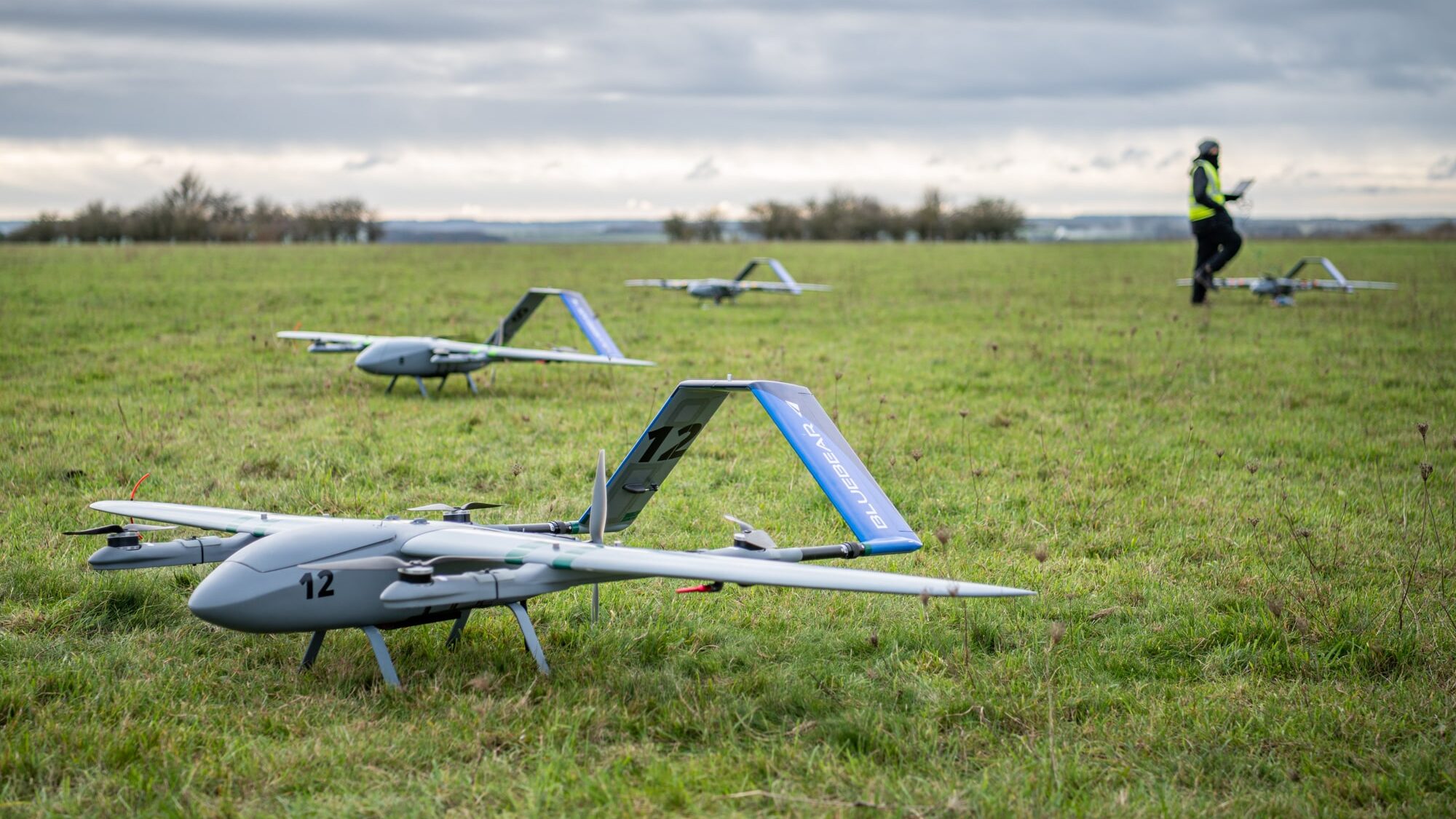
Blue Bear Ghost drones took part in a first AUKUS AI and autonomy trial designed to test target tracking capabilities under the direction of trilateral teams (UK MoD)
BELFAST — A collection of Australian, UK and US “AI-enabled assets” operated together as a swarm for the first time to successfully detect and track military targets during a novel technology demonstration held in Wilshire in southwest England.
The first-of-its-kind AUKUS artificial intelligence and autonomy trial for aerial and ground vehicles took place last month, involving over 70 military and civilian defense personnel and industry contractors from across the three countries, and was attended by AUKUS Advanced Capabilities Pillar (Pillar 2) leaders, according to the UK Ministry of Defence, which is now sharing details of the event for the first time.
Led by the UK’s military technology experimentation arm, the Defence Science and Technology Laboratory (Dstl), the MoD claimed the event saw a number of “world firsts,” including “live retraining of models in flight and the interchange of AI models between AUKUS nations.”
Pillar 2 allows AUKUS partners to collaborate on advancing a “collective understanding” of AI, autonomous and “leading edge” technologies to support Indo-Pacific security and stability, noted the MoD.
While the centerpiece of the historic AUKUS security arrangement between the three nations remains the promise of nuclear-powered submarines for Australia, the agreement also ensures robust technology sharing, including in the fields of “artificial intelligence and autonomy.”
“Trilateral cooperation on artificial intelligence (AI) and autonomy will provide critical enablers for future force capabilities, improving the speed and precision of decision-making processes to maintain a capability edge and defend against AI-enabled threats,” a White House fact sheet says. “Early work is focused on accelerating adoption, and improving the resilience of, autonomous and AI-enabled systems in contested environments.”
The recent testing was part of an initiative designed to allow the trilateral group to “rapidly field robust, trustworthy AI and autonomy in complex operations,” in a safe and responsible way, the UK MoD said.
The AI trial saw a wide range of air and ground vehicles tasked with testing target identification capabilities, including UK Blue Bear Ghost and Australian Insitu CT220 uncrewed aerial vehicles, British Challenger 2 main battle tanks, Warrior armored vehicles and Viking uncrewed ground vehicles, along with a “commercially hired” FV433 Abbot self-propelled gun and former Eastern Bloc BMP OT-90 infantry fighting vehicles.
Trilateral teams partnered to develop joint machine-learning (ML) models, carry out test and evaluation processes, and operate different drones. According to the UK MoD, the ML models were also “quickly updated” to include new targets and also shared among the coalition, with the AI models then “retrained” to meet different mission requirements.
“The strategic environment is rapidly evolving, meaning we must adapt our technologies at pace if we are to maintain our operational advantage,” said the UK MoD. “By sharing AI — and the underpinning data to enable it — with one another, Australia, UK, and US militaries can access the best AI, reduce duplication of effort, and ensure interoperability.”






















